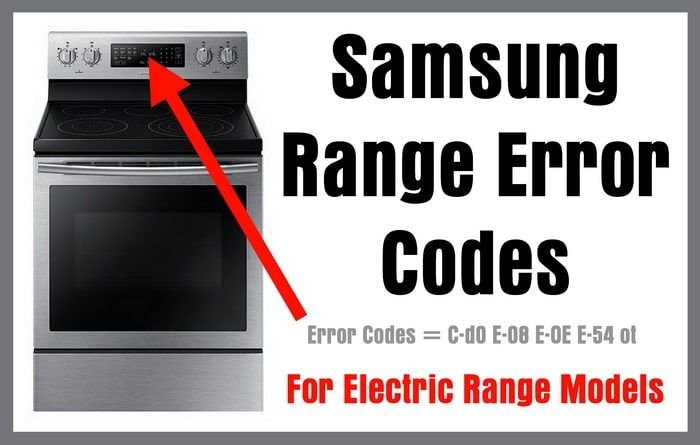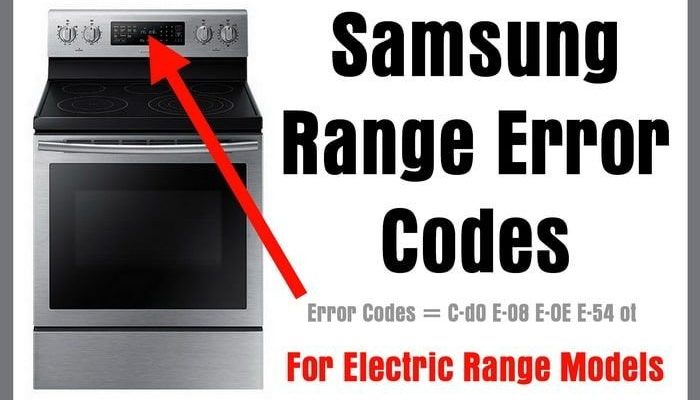
Errors can feel like the universe’s way of pulling the brakes on your culinary adventures. When your trusted Samsung range or oven throws the “Oe” error code, it’s like your appliance is trying to tell you something isn’t quite right. This isn’t just a frivolous warning — it’s an important signal that requires your attention. Understanding this error code is crucial, much like deciphering a secret message from a friend asking for help. So, what’s behind this pesky alert, and how concerned should you be?
Understanding the “Oe” Error Code
You might be wondering, what exactly does the “Oe” error code mean? In simple terms, this code usually signifies an *oven temperature sensor fault*. Think of it like this: the temperature sensor in your oven is like its internal thermometer. It’s meant to measure and regulate the heat, ensuring that your recipes turn out perfectly. However, if something goes wrong with this sensor, your oven might not heat correctly, just as a person with a broken thermometer wouldn’t know they have a fever.
The problem often stems from a malfunctioning sensor that’s unable to accurately read the oven’s temperature. This could lead to overheating or uneven cooking, both of which can turn your dinner plans upside down. More troubling, though, is the potential for safety issues. An oven that overheats can cause kitchen hazards. Picture a pot boiling over because the heat is higher than it should be — that’s not something you want to deal with.
The good news is that recognizing this issue early can prevent further complications. Just like catching a cold before it turns into a full-blown flu, addressing a sensor error right away can keep your appliance running smoothly and safely. So, how should you proceed upon seeing this error code?
Immediate Steps to Take
First things first, it’s vital to take this error seriously. Ignoring it would be like ignoring the check engine light on your car. The initial step is to *turn off the oven and unplug it*. This halts any potential danger and gives you time to assess the situation. Safety should always be your top priority, so ensure the appliance is completely cooled down before proceeding with any inspection.
Once you’ve secured your oven, consider checking the sensor and its connections. This might sound daunting, but think of it as checking your phone charger when it’s not working properly. Is it plugged in all the way? Is it damaged? Similarly, ensure that the sensor is securely connected and shows no visible signs of wear or damage. If you’re unsure about doing this yourself, it’s perfectly alright to call a professional technician to handle it.
If the sensor seems intact but the error persists, it might be time for a replacement. A faulty sensor can sometimes mimic a faulty reading, much like a broken clock that only tells the correct time twice a day. Trust in a technician’s expertise to diagnose and fix the issue, ensuring your oven returns to its peak condition.
Prevention and Maintenance
Now that you know what to do when the “Oe” error pops up, let’s talk about prevention. Regular maintenance can save you from these unexpected interruptions. Much like how you’d take your car for regular oil changes to keep it running smoothly, your oven also benefits from routine check-ups. Cleaning the oven and inspecting its components can prevent the buildup of issues that lead to error codes.
Additionally, always ensure that the oven’s environment is suitable. Avoid exposing it to excessive moisture or extreme conditions, as these can compromise the sensor’s efficiency. Simple practices, like ensuring your oven door closes tightly and avoiding slamming it shut, can extend the lifespan of your appliance’s components.
If replacing the sensor, opting for genuine parts ensures compatibility and reliability. Just as you wouldn’t use a square peg in a round hole, using parts made specifically for your model prevents future malfunctions. Keeping a close eye on how your oven performs following repairs can also alert you early to any new issues, ensuring a safe and delicious cooking experience every time.
Final Thoughts
It might feel overwhelming to see error codes flashing on your trusty kitchen appliances, but understanding them is the first step toward resolving the issue. The “Oe” error code on Samsung ovens and ranges is an important message about your appliance’s health. By recognizing and acting promptly, you can maintain the safety and performance of your kitchen’s workhorse. So, keep your oven in top shape with regular maintenance, and you’ll be back to cooking up a storm in no time.
